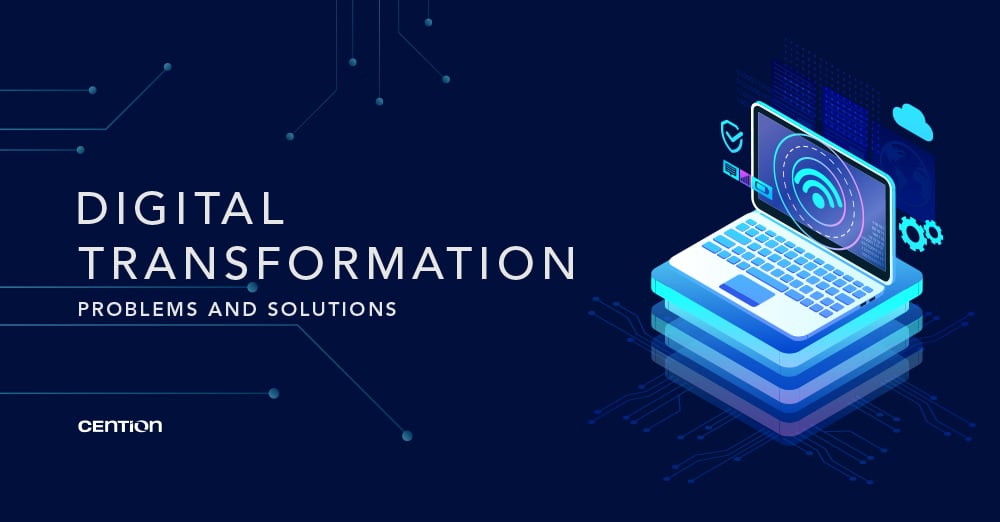Digital transformation is a process that never stops. Your organization upgraded to a new system? Are you finally using cloud? In simple terms, digital transformation is the use of technology to meet market and business requirements. The transformation should be executed with one specific goal - to improve stakeholders’ experience, which are fellow partners, employees, customers, and the entire community that the business serves.
According to ZDNet, 97% of IT decision-makers are responsible for implementing new technology into existing structures and creating new innovation opportunities. Decisions that are made based on clouded judgements are prone to cause future problems to the organization and its employees.
Providing employees with necessary follow-ups will help to reduce the attrition surrounding digital transformation. However, the drive behind the investment in the transformation should be made clear before anything could happen. Are there any certain short or long-term goals to be met?
Digital Transformation Problems: Fear of Competitors
The investment that goes into bringing digital transformation is massive. Trillions of dollars were spent, but only a small portion of that investment produced successful transformation initiatives. According to International Data Corporation, the significant rise in spending on digital transformation is caused by the fear of upset from tech-enabled competitors.
Many organizations choose to continuously invest in standard operational and IT services (new phones, computers, etc.) rather than investing in future R&D that could increase their market and competitive value.
Instead of coming out with actual innovative solutions that could give them an edge in the market, some organizations prefer to make moves to sustain their market share. Strategies were created merely as a defense mechanism against new advancements made by others. In a survey by Harvard Business Review, only 50% of CEOs view investments in DT as an important factor to drive profit.
Digital Transformation Problems: Legacy & Integration
Perhaps one of the biggest concerns in executing a successful digital transformation is how the new system can be integrated into legacy assets. Most organizations will hesitate to adopt new technology as a lot of investments have been channeled into their existing systems. However, the emergence of new digital tools could become the connecting bridge between an organization’s new and legacy assets.
A successful integration will not only integrate these two assets but improve the ROI for the existing systems.
Digital Transformation Problems: Shaping Culture
How well can employees adapt to digital change? What impacts will it bring to your organization’s culture and work structure? Not everyone is prepared to face the changes brought by implementing digital transformation strategies. Older employees may feel threatened and disheartened by these changes.
In addition, skilled employees should not be relied on to fill in the existing skill gaps. Individuals who are already equipped with the necessary digital skills should not be burdened with the task to nurture digital growth within the organization. Any transformation will not succeed without the full support from the entire staff. Balancing these aspects will keep morale and productivity optimized at all times.
Let’s take a look at some solutions that could help you with your digital transformation initiatives.
Putting Customers First
What does putting customers first have to do with bringing about a successful digital transformation?
A lot!
By setting up your company culture around providing the best customer service, it gives organizations a clear direction to drive their business success. Zappos, a well-known shoe company, decided to be different from its competitors. They decided to focus their attention and resources on company culture, staff development, and customer service.
And they were rewarded with loyal customers and convinced amazon to acquire the company for a whopping $850 million in 2009. Putting their customers first and focusing on their unique company culture allowed Zappos to remove friction between managing their products, resources, and services while fulfilling customer wants and needs.
Adopting A.I
Integrating artificial intelligence has become a matter of survival for enterprises to keep them from falling behind. It’s no longer a matter of when, but finding out the best way to adopt AI into operations. Forbes reported that by 2025, AI-driven businesses will considerably far more efficiently and gain more market share compared to those that don’t.
AI accelerators enable organizations to optimize key tasks and separate key tasks to increase development efficiency and application-building output. AI is predicted to be used to manage up to 25% of customer service operations within 2020. Incorporating AI into business-driven data analytics will provide users to gain more accurate insights.
Expanding to the Clouds
As the focus shift in this new decade is turning towards innovation, utilizing cloud capabilities (insert cloud link) has become the choice for businesses. However, most organizations run on multi-cloud environments, which creates unnecessarily intricate processes when moving tasks between different environments.
Through containerisation and API-led applications, the movements can be simplified, resulting in more optimized spending and cycle times. Rapid growth for organizations that use containerised applications to run their business environment is guaranteed over the next few months.
After all, leveraging cloud capabilities instead of investing time and resources to build them internally is a good step towards successful digital transformation.
Conclusion
Being alert to the latest advancements will be a key to initiating and executing a successful digital transformation. Implementing disruptive technologies such as cloud environments and machine learning will boost value and provide a significant edge to stay ahead and relevant as competitors within the vast market.


